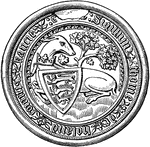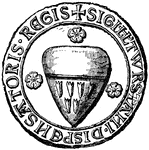
Seal of Thurstan
The heraldic seal of the archbishop of York, who worked under kings William II of England and Henry…
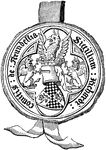
Seal of Richard, Earl of Arundel
"The Seal of Richard, Earl of Arundel, bears his achievement of arms. The supporters, crest, helm, etc.,…
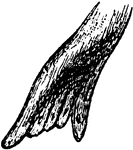
Foot of Seal
"Foot of the seal, which opens and closes in the act of natation, the organ being folded upon itself…

The Seal
"The seal, adapted principally for water. The extremities are larger than in the porpoise and manatee."—Pettigrew,…

The Turtle
"The turtle, adapted for swimming and diving, the extremities being relatively larger than in the seal,…

Cornus Baileyi
Cornus baileyi is an erect shrub with reddish branches. It is native from Pennsylvania to Minnesota…
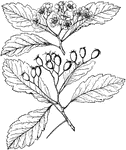
Crataegus Tomentosa
Crataegus tomentosa grows to twenty feet with spreading branches. The fruit is usually oval, dull yellow…

Cypripedium Spectabile
Cypripedium spectabile is a stout plant. The flowers bloom in June. It is found from Maine, New England,…
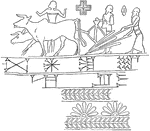
Babylonian Seal Impression
Pictured are men plowing a sowing. This illustration is from a Babylonian seal impression from the 14th…

Indian Cucumber Root
Indian cucumber root is the common name of medeola virginiana. The name comes from the taste of the…

Human Leg (Front View), and Comparative Diagrams showing Modifications of the Leg
This illustration shows a human leg (front view), and comparative diagrams showing modifications of…

Leg of Seal
This illustration shows the leg of a seal. P. Pelvis, FE. Femur, TI. Tibia, FI. Fibula, TA. Tarsus,…

Elephant Seal on a Rock
"The seal Macrorhinus elephantinus or proboscideus, or Morunga proboscidea. It is the largest of the…

Seal Swimming up to an Igloo
Illustration of the entrance of an igloo, built out of ice, partially underwater. A seal is swimming…

Leopard Seal
Leptonychotes weddelli. "A spotted seal of the southern and antarctic seas, belonging to the family…

Seal Press
"A press or stamp bearing dies on its jaws, or a die and a bed, for imprinting or embossing any device…

Skippet - Open Box with a Seal Inside
"A circular box used for covering and protecting a seal. Old documents were commonly sealed by means…

